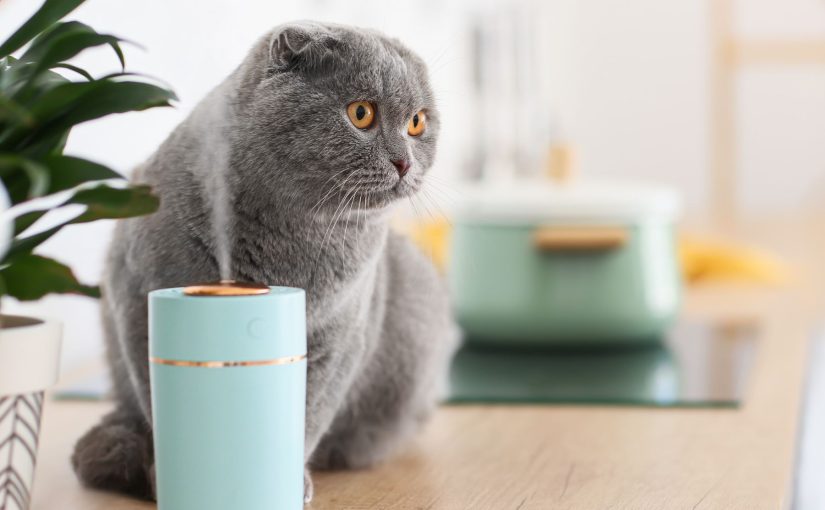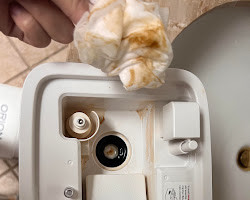Table of Contents
Essential Guidelines for Proper Humidifier Storage

| Properly storing your humidifier during periods of non-use is crucial to keep it functioning optimally and avoid microbial growth. Leaving residual moisture inside can allow mold, bacteria and fungi to accumulate over time, contaminating the water and releasing harmful spores into the air when used again. | |
| Action | Details |
|---|---|
| Deep Clean the Humidifier |
|
| Dry Out All Moisture |
|
| Store in a Cool, Dry Location |
|
The Importance of Complete Drying
Before you store your humidifier away, one crucial step stands above the rest: ensuring complete dryness. Any residual moisture left inside can become a breeding ground for harmful microorganisms like mold and bacteria. These not only pose a risk to the humidifier’s integrity but can also become significant health hazards when the device is next used.
Why It’s Essential:
- Mold and bacteria thrive in moist environments. Even a small amount of leftover water can lead to contamination.
- When reactivated, a humidifier with microbial growth can spread spores into the air, potentially causing respiratory issues and allergic reactions.
Practical Drying Tips:
- Wipe Thoroughly: After cleaning, use a dry, clean cloth to wipe down every component of the humidifier, ensuring no water remains.
- Air Dry: Allow all parts, especially the tank and filters, to air dry in a well-ventilated area for at least 24-48 hours. This step cannot be rushed.
- Run Empty: Consider running the humidifier on an empty setting for about 30 minutes to evaporate any moisture trapped in hard-to-reach areas.
Monitoring for Mold Growth
Even with diligent drying and cleaning, it’s essential to remain vigilant for signs of mold growth in your humidifier, especially during prolonged storage periods. Mold not only poses a significant health risk but can also damage your humidifier, reducing its efficiency and lifespan.
Key Indicators of Mold Presence:
- Visible Signs: Keep an eye out for any mold spots or fuzzy growths on any part of the humidifier.
- Odors: A musty or mildew-like smell emanating from the humidifier is a strong indicator of mold growth.
- Deposits: Cloudy or colored deposits around crevices, edges, or inside the tank can suggest mold or bacterial buildup.
- Filter and Tank: Pay special attention to the filter and water tank, as these areas are particularly prone to mold growth.
Action Steps if Mold is Detected:
- Immediate Cleaning: Upon detecting any signs of mold, thoroughly clean and disinfect the entire humidifier.
- Part Replacement: Inspect all parts for damage. Replace any components that are heavily affected and cannot be fully cleaned.
Regular checks for mold are crucial, especially before and after storage periods, to ensure your humidifier remains safe and effective for use.
 Preparing Your Humidifier for Next Use
Preparing Your Humidifier for Next Use
After a period of storage, it’s important to ensure your humidifier is clean, functional, and ready for operation. Follow these steps to prepare your humidifier for its next use:
- Inspect for Mold or Mineral Buildup: Before using your humidifier, inspect it for any signs of mold or mineral deposits. If any are present, refer back to the cleaning and disinfecting steps.
- Check All Parts: Ensure that all components, especially filters and tanks, are in good condition. Replace any parts that show signs of wear or damage.
- Run a Cleansing Cycle: Fill the tank with a mixture of water and a small amount of vinegar to run a cleansing cycle. This helps to remove any lingering odors or residues. Rinse thoroughly afterward.
Maintenance During Storage
Even while in storage, your humidifier can benefit from periodic checks and basic maintenance:
- Dust Off: Every few months, take out your humidifier to dust it off. This prevents dust accumulation that could clog the vents or affect the device’s performance.
- Battery Check: If your humidifier uses batteries for any functionality, ensure they are removed to prevent corrosion over time.
- Storage Check: Periodically check the storage environment to ensure it remains dry and cool, without any drastic changes in temperature or humidity that could affect the humidifier.
Frequently Asked Questions
Q: How often should I clean my humidifier before storage?
A: Clean and disinfect your humidifier thoroughly before storing it to prevent mold and bacteria growth. This should be done at least once every 3-6 months or after each use period.
Q: Can I leave water in the humidifier tank during storage?
A: No, it’s crucial to empty and thoroughly dry the tank and all parts of the humidifier to prevent microbial growth.
Q: What should I do if I find mold in my humidifier after storage?
A: Disassemble and clean each part with a mixture of water and vinegar or a manufacturer-recommended cleaning solution. Severely mold-infected parts may need to be replaced.
Q: How long can a humidifier be stored safely?
A: A humidifier can be stored indefinitely if properly cleaned and dried. However, inspect it every few months during storage for any signs of mold or damage.
Q: Is it necessary to replace the filter before storage?
A: Yes, it’s advisable to replace the filter before storage to ensure it’s fresh and clean for the next use. If the humidifier won’t be used for an extended period, consider storing it without the filter and replacing it when you’re ready to use it again.
Q: Can I store my humidifier in the attic or garage?
A: It’s best to avoid storing humidifiers in places with extreme temperature fluctuations or high humidity, such as attics or garages. Opt for a cool, dry location like a closet or pantry.
Q: How do I protect my humidifier from dust during storage?
A: Cover the humidifier with a breathable fabric or store it in its original box or a breathable storage bag to protect it from dust and debris.
Q: What’s the best way to dry a humidifier before storage?
A: After cleaning, leave all parts disassembled in a well-ventilated area to air dry completely. Running the humidifier on an empty setting can also help evaporate residual moisture.
Q: Should I perform any maintenance on my humidifier during its storage period?
A: Periodically check your stored humidifier for dust and any signs of mold. Wipe it down and ensure it’s still in a suitable storage environment.
Q: What kind of cleaning agents are safe for my humidifier?
A: Typically, mild agents like white vinegar or hydrogen peroxide are safe and effective for cleaning humidifiers. Always refer to the manufacturer’s instructions for recommended cleaning solutions to avoid damaging sensitive components.


 Preparing Your Humidifier for Next Use
Preparing Your Humidifier for Next Use